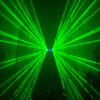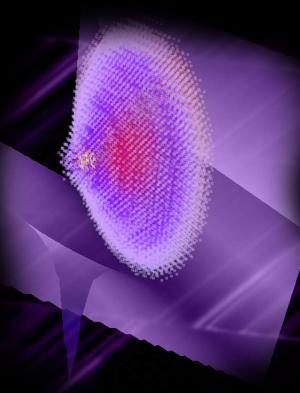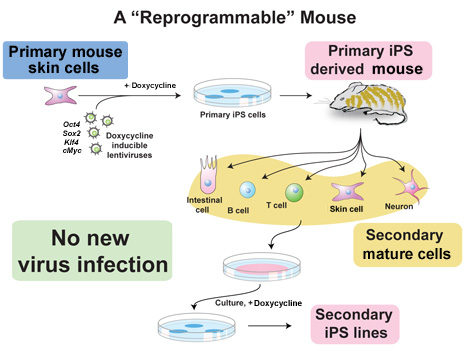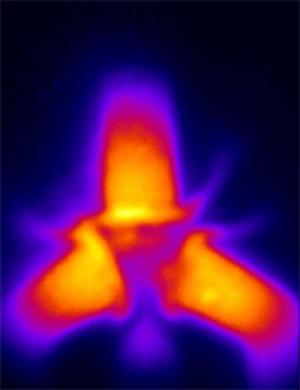Smallest planet shrinks in size
Source: BBCNews
The smallest planet in the Solar System has become even smaller, studies by the Messenger spacecraft have shown.


Source: BBCNews
The smallest planet in the Solar System has become even smaller, studies by the Messenger spacecraft have shown.

I found this website today with some handy lessons for japanese
Get it at http://www.rationalresponders.com/
 |
|
 |
The drives are based on SLC memory and they are all 2.5-inch models using the SATA II interface.
The read speed should be between 120 and 143MB/s, while the write speed should hit a quite amazing 80 to 93MB/s. The drive is shock resistant to 1500G.
The products will be known as OCZSSD2-1C32G, OCZSSD2-1C64G and OCZSSD2-1C128G and you can expect to be able to buy them as of next week.
| Model | Price in the US | Price in Europe |
| 32 GB | 108 euro ($170) | 150 euro ($236) |
| 64 GB | 165 euro ($260) | 230 euro ($362) |
| 128 GB | 305 euro ($480) | 400 euro ($629) |

Source: Dailytech
Bacterial resistance to treatments may become a thing of the past thanks to a little green dye and low power lasers.
Bacteria can be a big problem. Bacterial infections kill many thousands of people each year, even in hospitals where care can be given. Some of these infections come from those very hospitals, in fact.
A growing problem is that bacteria, like most organisms, evolve to combat things that are dangerous to them. This has produced strains of bacteria that no longer respond to treatments that once hindered their growth. While advances such as MIT’s bacteria resistant polymer will surely help prevent hospital-caused infection, it does not help treat them once they’ve taken root, nor can it do much against infections caused from accidents in less clean environments.
That’s where lasers come in to diffuse the situation. While the statement conjures up visions similar to Johns Hopkins’s virus busting laser, raining beams of bacterial genocide down upon an infection, it’s a lot less difficult than that. In fact, the laser in this case doesn’t even need to make contact with the bacteria to do the job. Instead, a harmless dye known as indocyanine green is what brings a quick end to the harmful invaders. Or more specifically, what happens to the dye when it’s activated by a near-infrared laser.
The effect is similar to Rensselaer Polytechnic Institute’s cancer killing nanoparticle treatment. When a laser, in this case a 500mW gallium-aluminum-arsenide near-infrared laser projecting at 808nm wavelength, is shined at a photosensitizer, the indocyanine green, it creates free radicals known as reactive oxygen species. These free radicals destroy bacteria by disrupting numerous parts of their physiology.

Source: Dailytech
Nanoelectronics researchers discover a bizarre shaped molecule in one of their devices can act as first known quantum state-manipulable atom

Source: Dailytech
“Using these cells could help define the milestones of how cells are reprogrammed and screen for drug-like molecules that replace the potentially cancer-causing viruses used for reprogramming,”

Source: ubergizmo
iRiver goes underwater this time round with its Aquabeat MP3 player which targets swimmers who want to enjoy some of their favorite tunes while getting their daily dose of exercise in. It measures a relatively small 61mm x 46mm x 20mm and doesn’t look as though it will get in your way as you attempt to outdo your previous lap record. 1GB of storage space ought to be sufficient, unless you’re preparing for the Olympics and get in more than 9 hours of practice time each day – that’s exactly how long the battery will last. The Aquabeat will hit Japan this July 4th for approximately $145.

Source: crunchgear
Today Olympus Japan announced [JP] the development of a 360° lens and camera prototype. The technology is a world first.
The company started working on the prototype last year. The camera covers a vertical angle of 180° now, while the old version only covered 45°. A special kind of glass is used for the lens, which has a diameter of 3cm.
Read the article at http://www.rsf.org/rubrique.php3?id_rubrique=174
Source: Dailytech
Quasiparticle based circuits could break down the electro-optical communication barrier.
One of the bottlenecks in current electro-optical communication systems is the need to convert electrons into photons. While optical interconnects maybe be amazingly fast and efficient, the conversion process still chews up precious time.
This May, Harvard researchers showed a new technology that could be used to build LEDs directly into an integrated circuit. Last week, University of California at San Diego scientists published work in the journal Science using a more direct approach at converting electricity to light on the fly.
Excitons are an interesting type of particle. They are created when photons enter a semiconductor, exciting the electrons it contains. An excited electron forms an electron-hole pair, which in this case, is called an exciton. What makes excitons useful for optical ICs is that when the electron-hole pair recombines, they emit a flash of light.
The key to creating an electro-optical IC in this case is the ability to control the exciton, preventing it from recombining too early. To accomplish this, the UCSD scientists used a special semiconductor made of gallium arsenide, very low temperatures (less than 40 degrees Kelvin), and a special type of exciton that separates the electron and hole pair by several nanometers, confining them to their own quantum wells.

Recent Comments